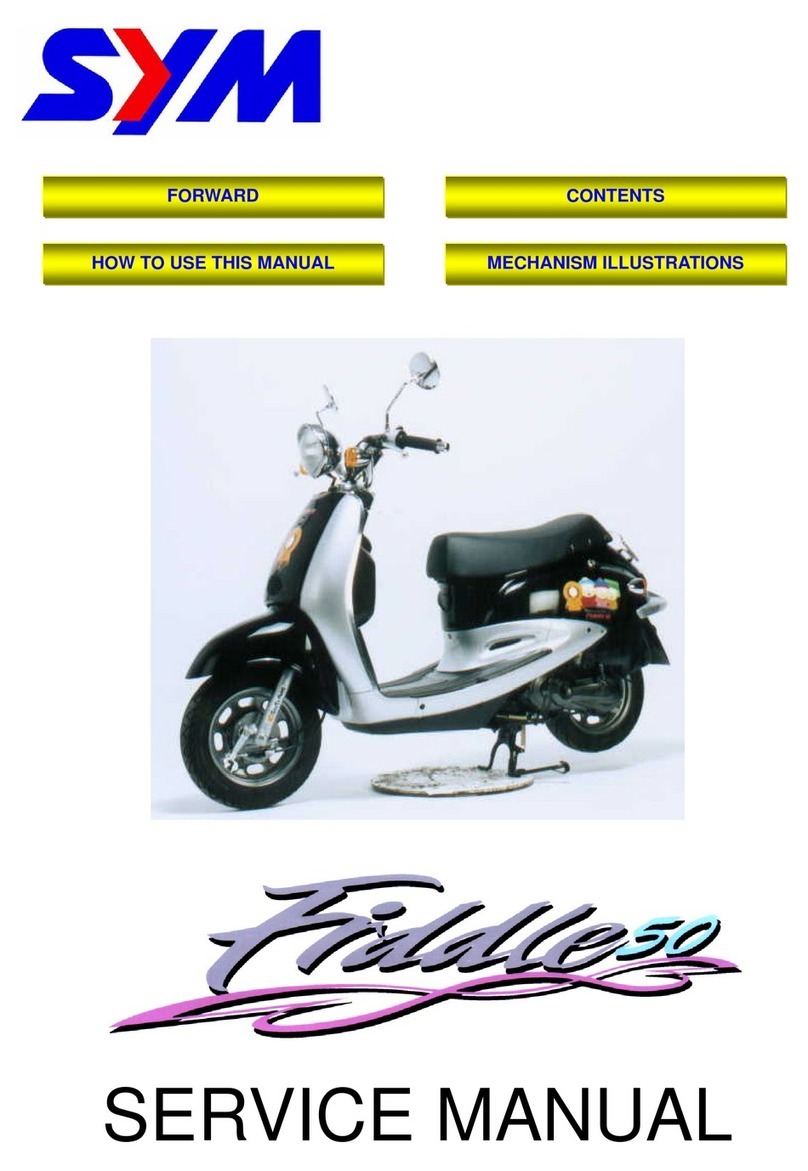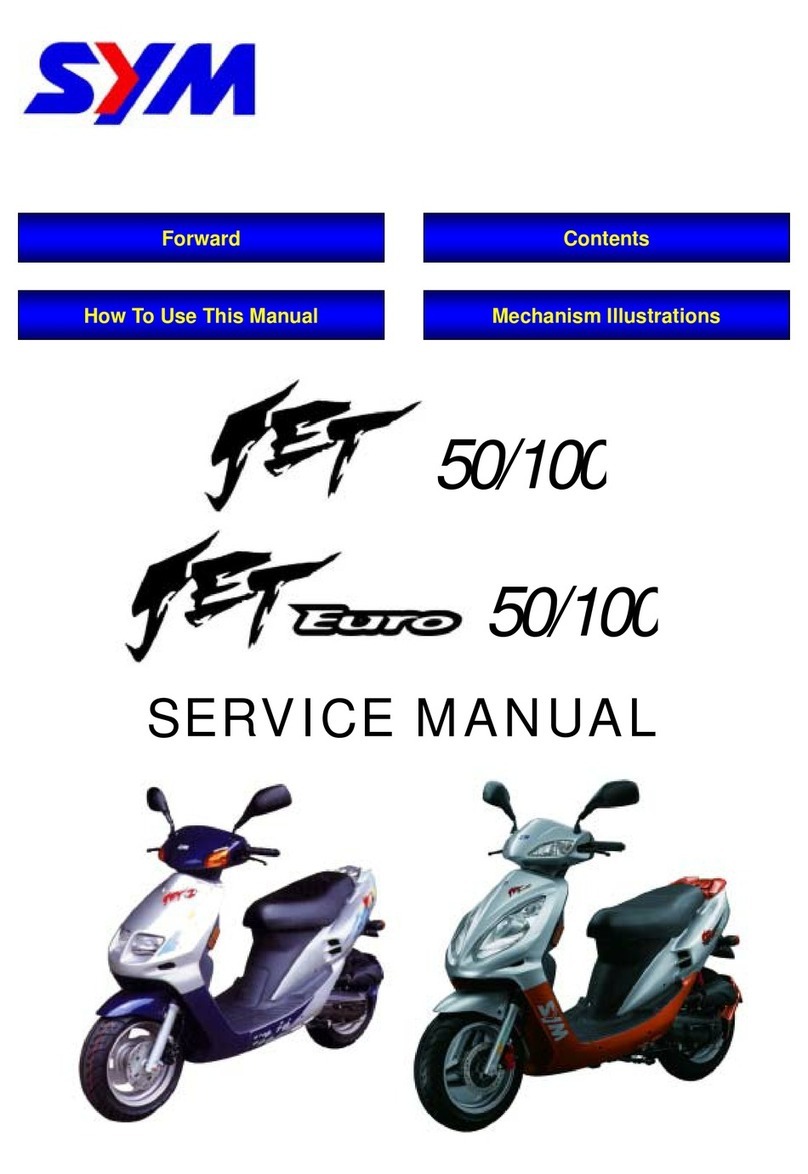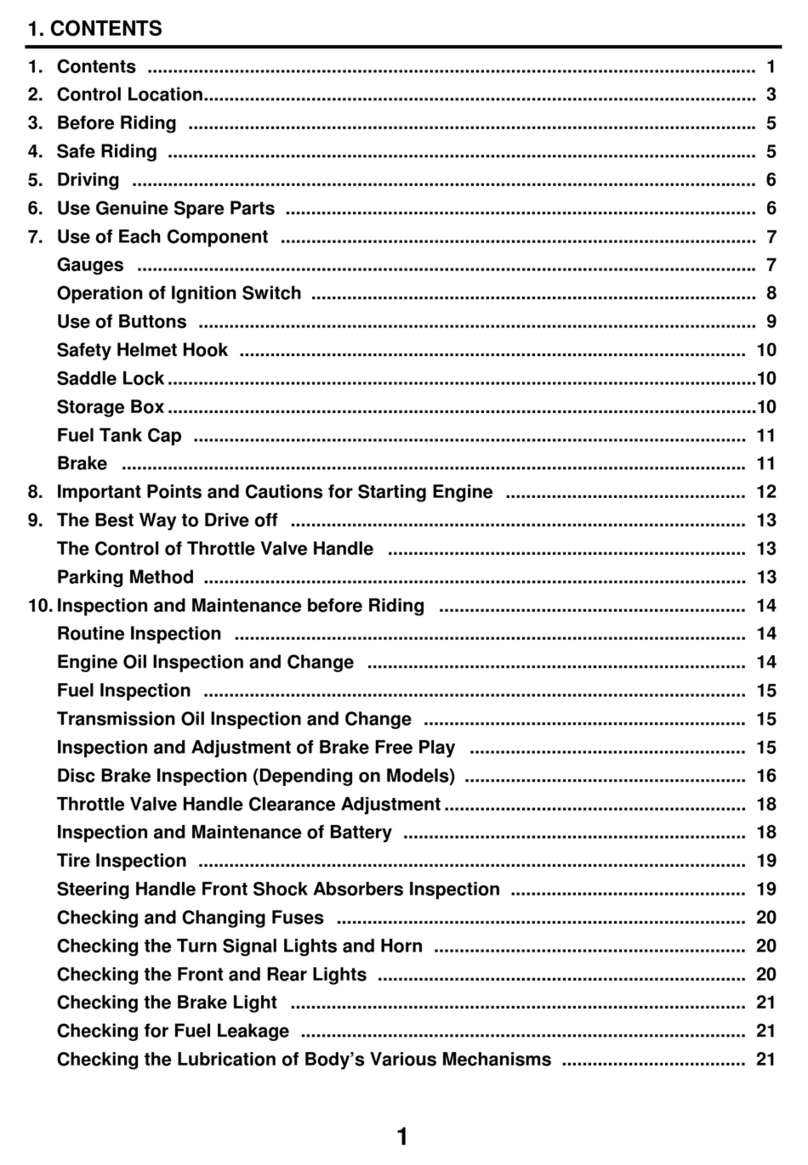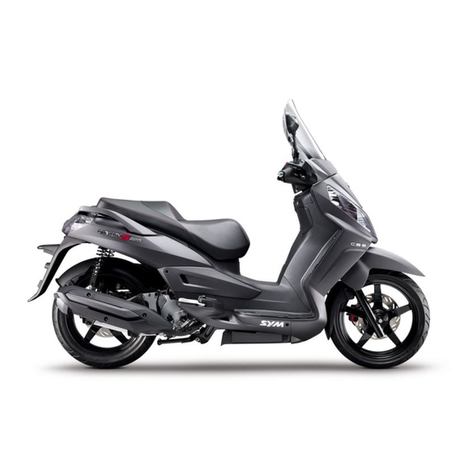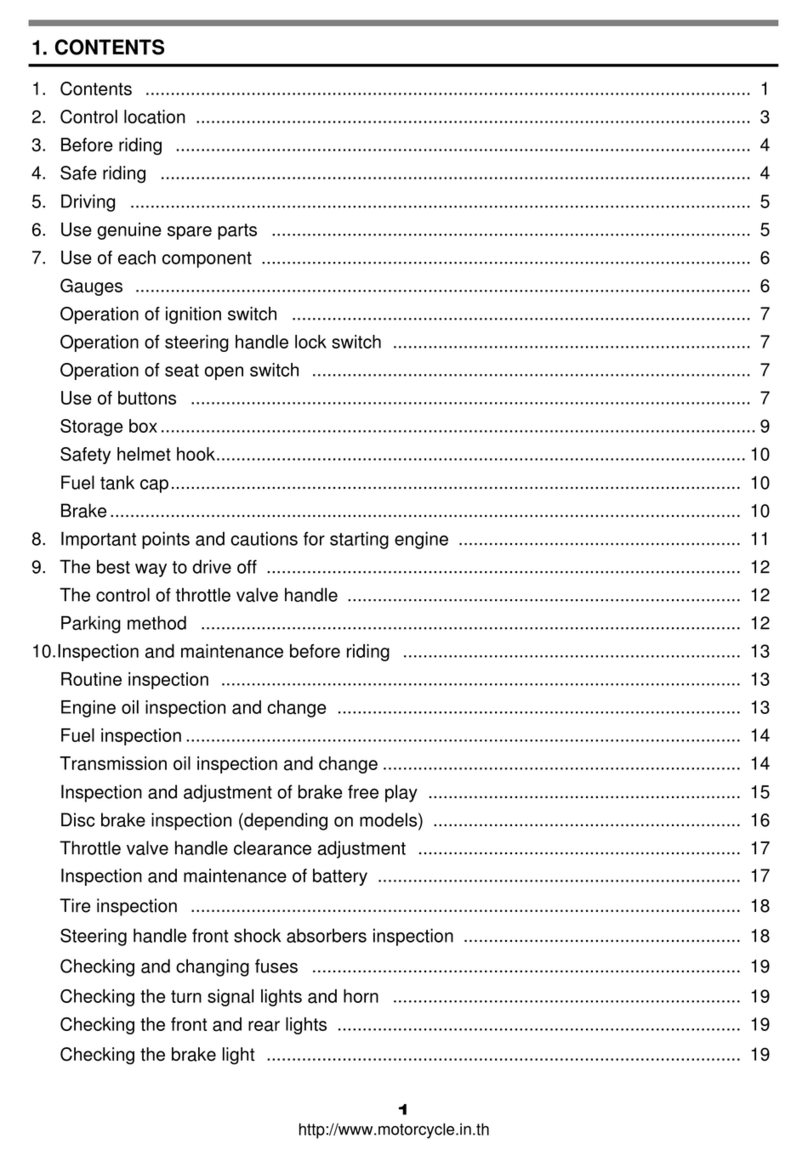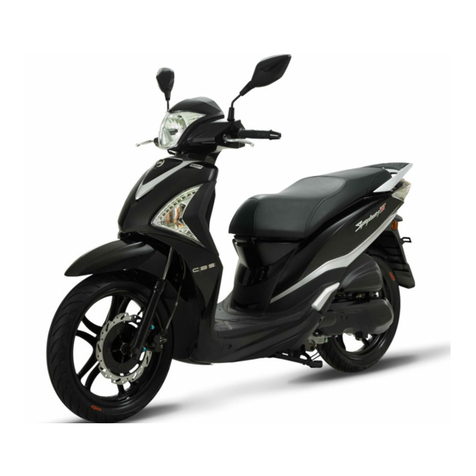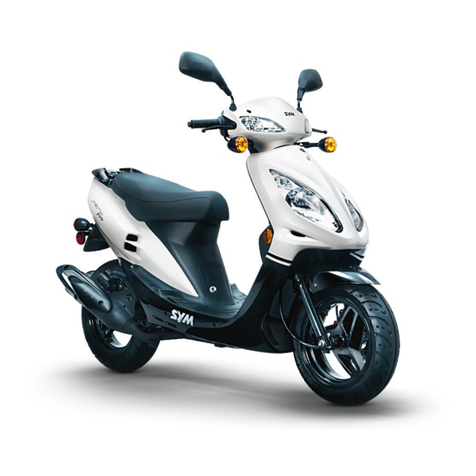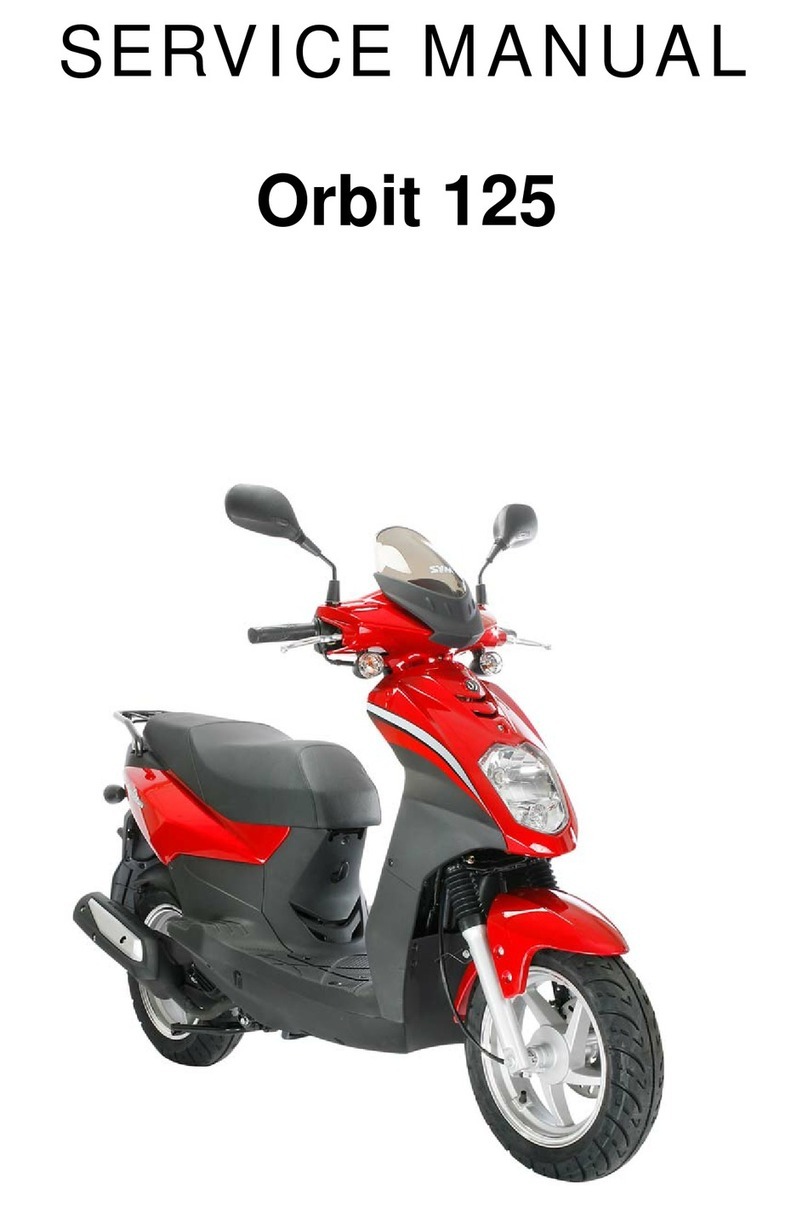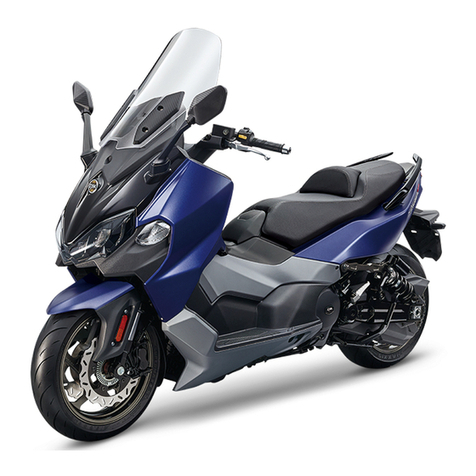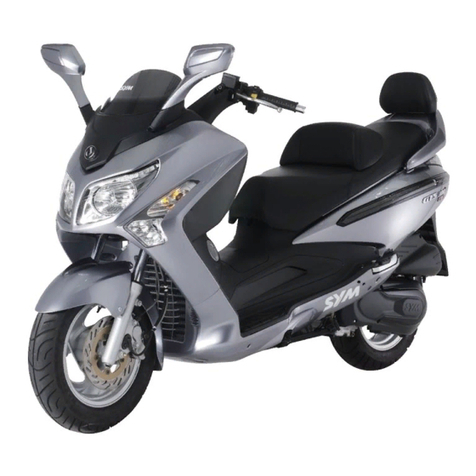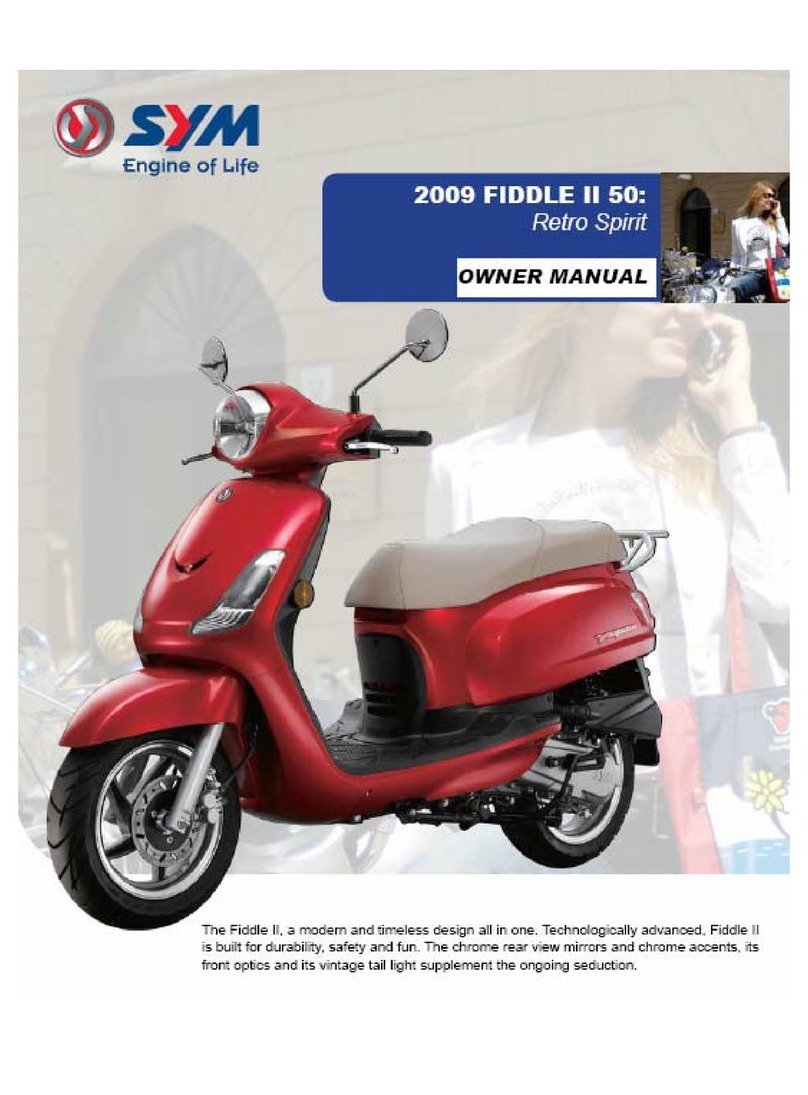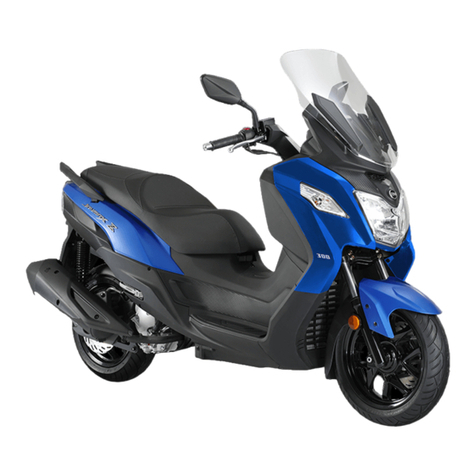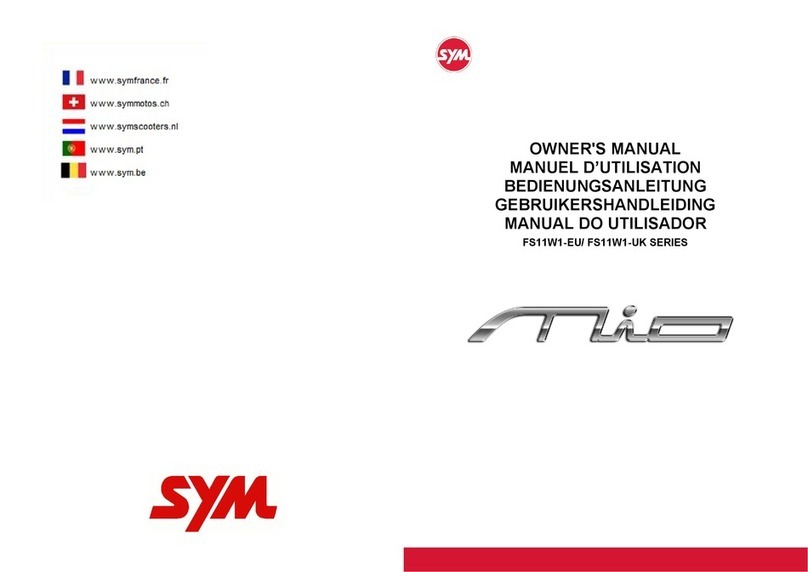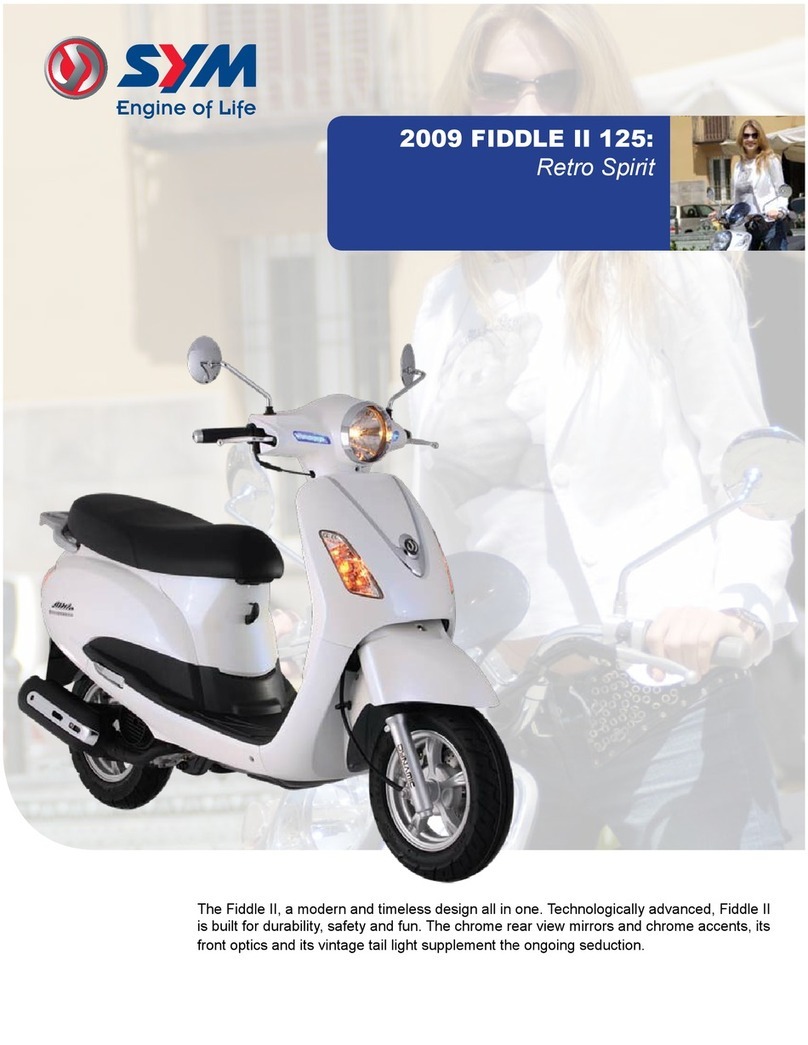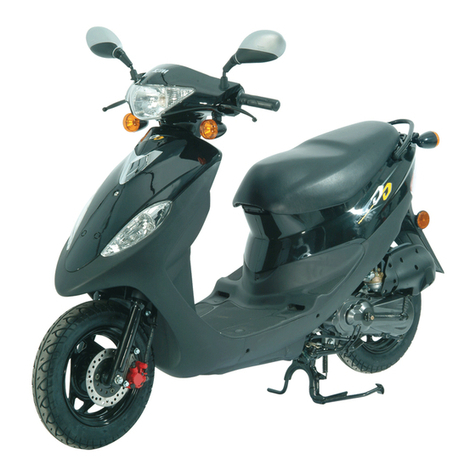THE ARTICLES MENTIONED BELOW ARE APPLICABLE ONLY FOR
THE UNITED STATES AND CANADA.
1. NOISE EMISSION WARRANTY
SANYANG INDUSTRY CO.,LTD. warrants that this exhaust system, at the time of sale,
meets all applicable U.S. EPA Federal noise standards. This warranty extends to the first
person who buys this exhaust system for purposes other than resale, and to all subsequent
buyers. Warranty claims should be directed to:
3,chung-Hua Road, Hukou, Hsin-Chu Taiwan, R.O.C
Tel:+886 35981911 Fax:+886 35981844
2. TAMPERING WARNING
Tampering with noise control system prohibited. Federal law prohibits the following acts or
causing thereof:
(1) The removal or rendering inoperative by any person other than for purposes of
maintenance, repair, or replacement, of any device or element of design incorporated
into any new vehicle for the purpose of noise control prior to its sale or delivery to the
ultimate purchaser or while it is in use, or
(2) The use of the vehicle after such device or element of design has been removed or
rendered inoperative by any person.
Among those acts presumed to constitute tampering are the acts listed below.
(1) Removal of, or puncturing the muffler, baffles, header pipes or any other component
which conducts exhaust gases.
(2) Removal or puncturing of any part of the intake system.
(3) Lack of proper maintenance.
Replacing any moving part of the vehicle, or parts of the exhaust or intake system, with parts
other than those specified by the manufacturer .t80
3. SAFETY INFORMATION
yAlways wear your helmet (dot approved) correctly fastened. Do not carry loose items and
always wear suitable protective clothes, and protective eyewear.
yGood psychophysical conditions are very important for safe operation.
yDo not operate under the influence of drugs and/or alcohol.
yDo not operate in state of physical fatigue or drowsiness.
ySlow down on slippery surfaces , unfamiliar terrain and when visibility is reduced.
yBe alert when operating this vehicle.
yDo not exceed weight capacity.
yThe safety, stability and handling of this motorcycle may be adversely affected by the
addition of accessories or luggage.
yDo not install accessory or replacement parts not approved by sym.
yFailure to follow these warnings could lead to an accident, serious injuries or death.
yUse unleaded fuel octane rating (R+M)/2 method of between 87&92.
yRead owners manual carefully before operating this scooter.
yObey posted speed limit and other traffic signs and signals.
